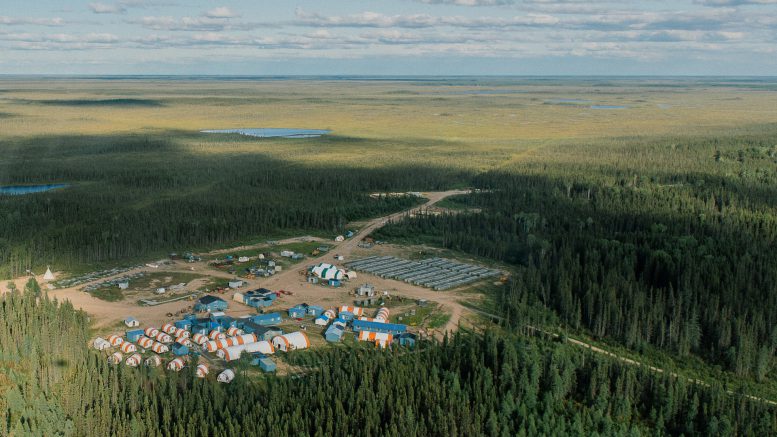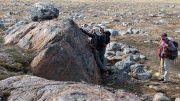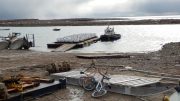The Ring of Fire camp is the most important mining discovery in Canadian history for its strategic minerals including nickel, copper, platinum group metals, chromite and titanium. It even exceeds the legendary Sudbury Basin.
Discovered in 2007, the region is located about 450 km northeast of Thunder Bay in the isolated and vast peatlands of the Hudson Bay lowlands, an area roughly the size of Norway but with only about 10,000 people. Contrary to environmentalists’ claims, sustainable exploration and mineral development will have minimal impact on the environment and provide critical minerals to mitigate global warming.
Australian miner Wyloo owns the Eagle’s Nest nickel-copper project and various chromite deposits in the Ring of Fire area. The discovery has helped Ontario attract roughly $43 billion, and counting, of new electric vehicle (EV) investment. Canadian junior explorer Juno holds claims on more than half of the camp. Marten Falls and Webequie First Nations also support the development and the promise of providing multi-generational jobs and economic opportunities across northwestern Ontario.
The West needs to bolster defence spending due to new wars and global instability, strip China of its critical mineral dominance, develop its own sources to power the green energy transition and help local First Nations faced with the shortest ice road season in memory. These all converge at one point: the road to the Ring of Fire needs to start construction this summer.
Russia/Ukraine war
The Russian invasion of Ukraine in February 2022 has changed everything. If cobalt from the Congo, mined by poor African children was a problem for Western consumers, it’s safe to assume no one wants to buy an EV supplied with “blood nickel” or any other commodity from Russia. The war is part of global military spending that reached about $2.4 trillion last year, the most in 15 years, according to the Stockholm International Peace Research Institute.
Many European analysts fear the war in Ukraine, combined with the Gaza/Israeli conflict and a possible Chinese invasion of Taiwan will spark a Third World War. Ivanhoe Mines’ (TSX: IVN) Robert Friedland likes to cite how the war in Ukraine fired 50,000 tonnes of copper shells into oblivion in its first year. War puts pressure on mineral supplies.
During the 1950s, the United States government gave Falconbridge a $40 million subsidy, that would be worth $455 million today, to help develop a mine in Sudbury, Ont. to ensure diversity of supply from the predominant producer of that time, the Inco subsidiary International Nickel!
Today, the American military is again concerned about security of supply for essential commodities and, under the Defence Production Act, recently funded two Canadian junior mining projects: Fortune Minerals’ (TSX: FT) Northwest Territories cobalt-gold-bismuth-copper mine and processing facility and Lomiko Metals (TSXV: LMR) graphite deposit in Quebec. Many more funding announcements are sure to follow.
Roughly 3.6 million tonnes of nickel were mined last year and Glencore (LSE: GLEN) has predicted global demand could grow to 9.2 million tonnes by 2050 mostly due to the EV battery market.
If all the proposed Western EV manufacturing operations are built, today’s North American nickel production, largely from Sudbury, Thompson, Man., Voisey’s Bay, N.L. and Raglan in Quebec won’t be enough. New production needs to come on stream. And as in most sulphide nickel camps around the world, many mines are often found. The same will eventually happen in the Ring of Fire.
President Trump?
In 2023, if countries with extensive social programs such as Finland (2.45%), the Netherlands (1.7%), France (1.9%) and Britain (2.07%) can meet the benchmark 2% of GDP military spending goals or come very close, there is no excuse for Canada (1.4%) to keep freeloading on American coattails.
It’s a national embarrassment for the country and for our military elite who remember the outsized contributions this country provided in two world wars and the Korean conflict. We will be politically eviscerated if Donald Trump wins the presidency.
America is in an economic war with its main rival, China. The competition between them over the critical minerals needed to build the products essential for decarbonization is cut-throat and fierce.
The Chinese seem to be flooding the world with cheap supplies of “dirty” Indonesian nickel. That economically undercuts production in Australia and potentially Canada, threatening Western supplies that are largely sustainable and green in comparison to Chinese practices. In 2023, China severely restricted access to gallium and germanium, essential minerals for semi-conductors and various military applications, and has cut graphite exports.
Melting winter roads
Global warming is here. This has been one of the shortest winter ice road seasons on record. The roads are vital to ensure the delivery of bulk products like fresh vegetables that would cost considerably more if they were flown in. Isolated First Nations communities depend on them.
Ironically, non-governmental organizations have been vehemently opposed to the proposed permanent roads and Ring of Fire mine development to produce the critical minerals needed to slow global warming.
Wyloo is working to sustainably build their Eagle’s Nest nickel mine with low environmental impacts. Tailings will be stored underground and all processed water will be recycled.
The actual mine disturbance is less than one square km – that includes airstrip, supply storage and other surface buildings aside from the mineshaft – which will release about 0.046 tonne of carbon per year, according to the company. Wyloo estimates the mine will generate $100 million a year for the local economy of First Nations businesses and the life of the mine will be at least 20 years, though it could last much longer since the deposit is open at depth.
Raised eskers – sands and gravels left behind by glaciers that contain no carbon absorbing peat – will hold 80% of the proposed roads. The remaining 20% are to be built over peatlands and use modern floating geo-textile and geogrid materials that rest on top of the muskeg allowing it to continue to store carbon. This technology has been successfully implemented in the oil sands region of Alberta, northern Manitoba and inScotland, all areas with extensive peatlands.
Webequie and Marten Falls First Nations, on whose traditional territories the majority of mineral deposits have been found, support sustainable mineral development. The leadership of some other First Nations, most of whose communities are located hundreds of kilometers away from the proposed mine, don’t support the project.An agreement seems possible between the province and Aroland First Nation, where the road into the isolated region would start, Ontario Premier Doug Ford said recently.
The first 100 km along an existing forestry road might not even need an environmental assessment.
Summary
Global warming has significantly shortened the winter road season to supply essential goods to the isolated communities in northwest Ontario. The development of the Ring of Fire would be an enormous economic boost to marginalized First Nations through the region.
Canada is the second largest geologically-rich land mass on earth and our mining practices are sustainable and green. Not to develop the mineral abundance of the Ring of Fire would be a massive insult to our Western allies.
We need to start the road to the Ring of Fire now!
Stan Sudol is a Toronto-based communication consultant, owner/editor of RepublicOfMining.com and has appeared many times on TVO’s The Agenda discussing Northern Ontario issues.





Great article, Stan.